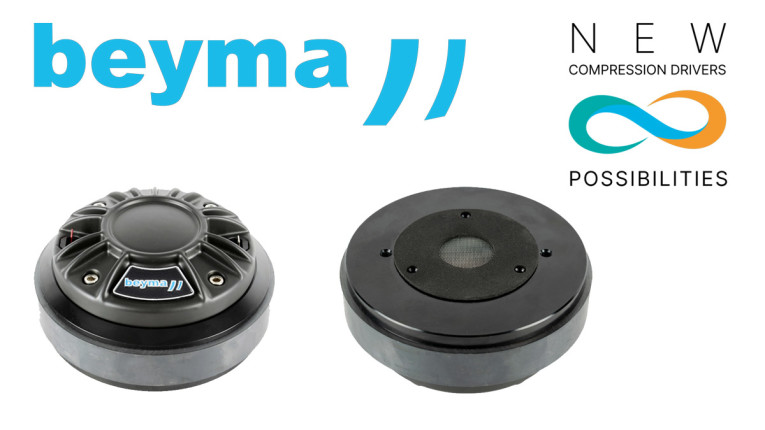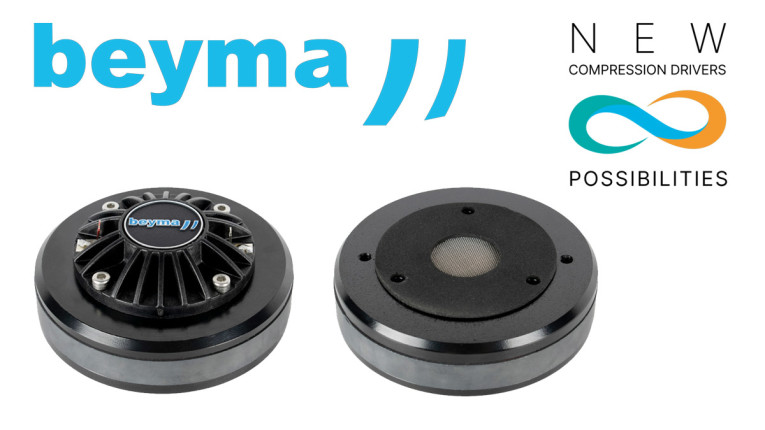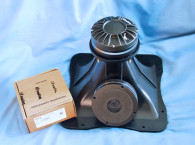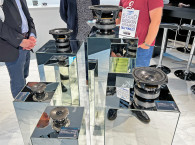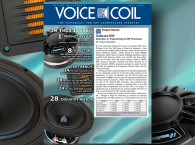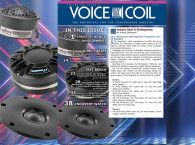
The Spanish pro sound OEM transducer manufacturer always introduced some significant proprietary speaker technologies. Over the more than 50 years of its history and in particular in the last decades, Beyma patented its Hélicex design, which provides higher power handling capacity by reducing the thermal limit of the voice coil; developed the new PM4 high tech polymer diaphragm; patented its MaltCross technology, minimizing the problem of heat dissipation and maximizing the total SPL of its woofer range; and applied its X-Bow design, increasing sensitivity and power handling of its pleated diaphragm tweeters. All these examples already made extensive use of the most advanced speaker simulation and FEA-optimization tools, but those efforts are now at a whole new level as the company showcased in Barcelona, during the ISE 2023 show.
In the previous ISE 2022 show, which exceptionally took place in the month of May, audioXpress found a reenergized Beyma, eager to show the results of the intense research and development efforts over the the previous two years. While many companies in the space had suspended hiring and investments due to the effects of the pandemic, the R&D labs of Acustica Beyma, led by Jorge Serrano Ramírez intensified recruitment, and accelerated its modeling and mathematical simulation efforts using COMSOL and other tools that would allow the Spanish company to obtain innovative solutions.
Those new products were first visible in 2022, with the launch of the NMF (Near and Mid Field) series of drivers, and are now reinforced with a significant new series of compression drivers in 2023. Combined, Beyma introduced one of its most significant product catalog expansions, with models for all frequency ranges and power levels, but also reaching out to new high-quality application markets. And of course, the core innovations can all be applied to new models that the company plans to introduce in the market gradually.
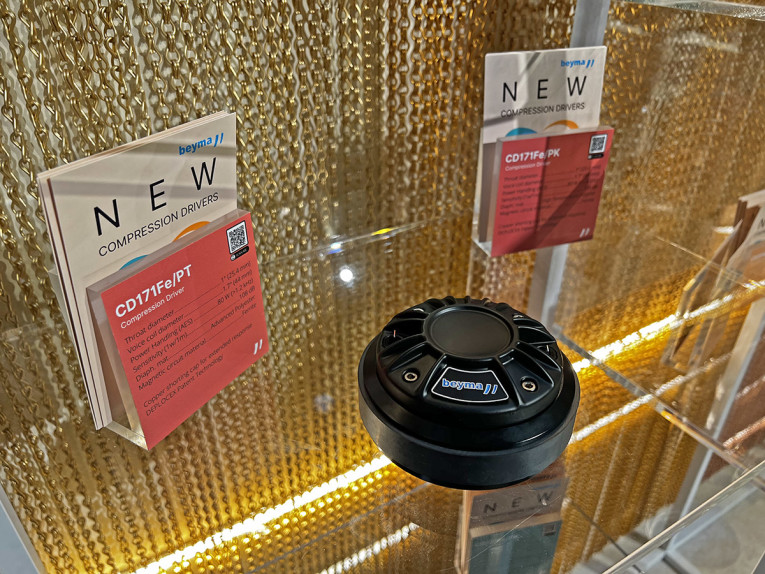
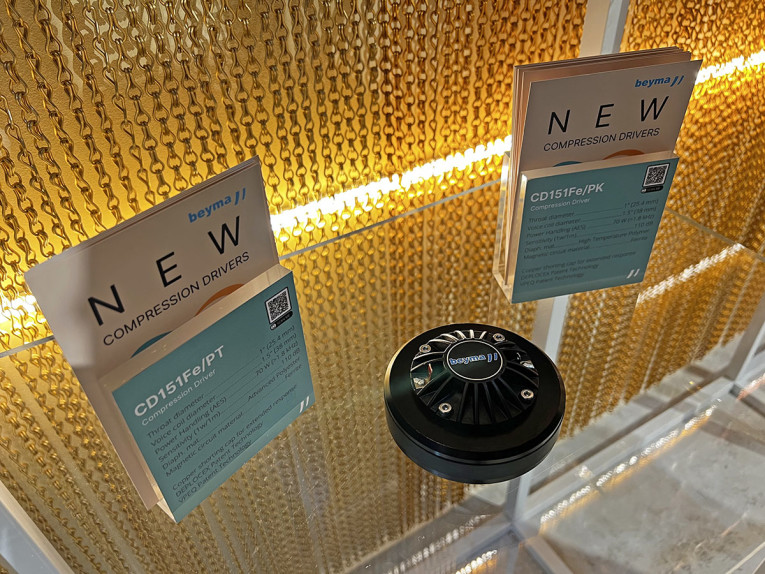
The brand new generation of Beyma compression drivers encompasses 2 throat sizes, 4 voice coil diameters, 3 different types of diaphragm materials, and 2 magnet types, resulting in 12 new models to choose from the company's catalog, not to mention customized models that can be offered to volume projects from manufacturers.
Based on the concept of delivering infinite possibilities, the new series of devices is available with 3-inch and 2.5-inch voice coil diameters for 1.4-inch output diameter models, and also includes 1.75-inch and 1.5-inch voice coil diameters for 1-inch output devices.
Available diaphragm materials include Titanium, a high-temperature polymer (which Beyma has long researched) and an advanced polyester formula. Each one provides different nuances and characteristics that will inspire speaker designers, and will certainly help system designers achieve their goal through different response in SPL, timbre and sonic properties, depending on the kind of application or acoustic targets.
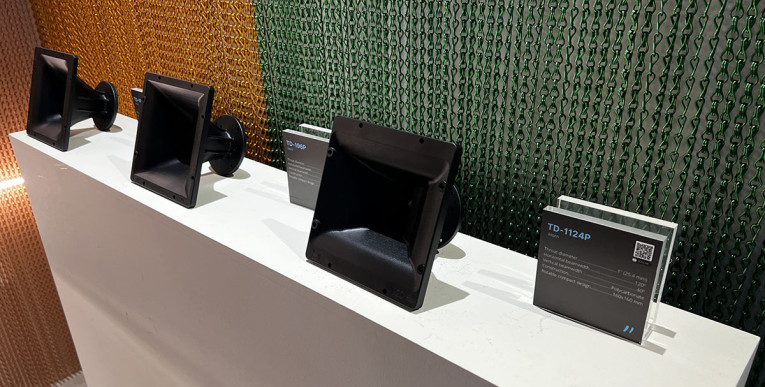
The whole new series of compressions drivers is the result of specific research and extensive simulation and experimentation efforts that allowed two key approaches that Beyma has decided to patent. Those innovations include the new VPEQ and DEPLOCEX technologies (patents pending) that allow drivers to improve SPL, linearity, and transient response, while minimizing old problems like resonances or power compression losses.
Of note, the sophisticated titanium diaphragm (available for the new CD314 and CD2514 compression drivers) features a mathematically optimized geometric pattern that improves system linearity and efficiency while eliminating unwanted resonances. This is the result of the new VPEQ technology together with the computer optimization of the compression chamber, resulting in an optimized geometry to linearize the response in certain frequencies and achieve the best sonic properties.
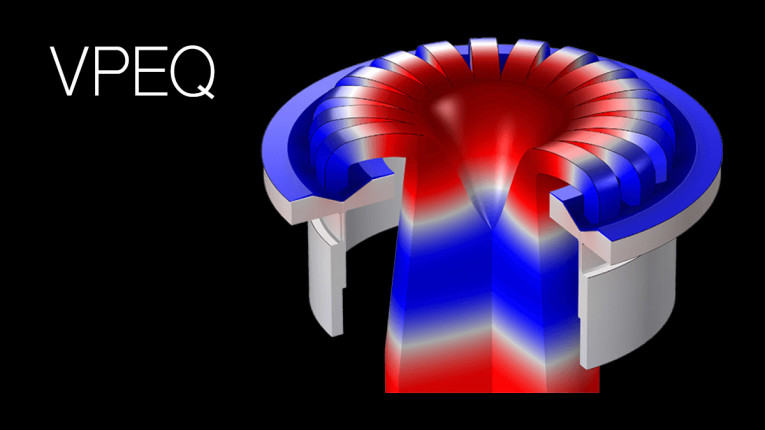
Detailing Beyma's VPEQ approach, this technology focuses on controlling modes and the linearization of the frequency response in compression drivers. The solution explores the variation of the duct shape and width, according to different mathematical functions to linearize the response and obtain a better transfer function. This organic shape, which could only result from intense modeling and computation, creates a notable variation of the sound pressure level for the calculated frequencies resulting in a much better transient response, according to Jorge Serrano Ramírez.
The second area of research which resulted in the DEPLOCEX patent, addresses the recognized challenges of thermal dissipation. As Beyma details, this solution goes beyond the one layer edgewound wire or the double layer round wire voice coils that are traditionally used to obtain the necessary Bl if the highest levels of SPL required in the industry are to be achieved. "This technique, in the case of the double layer configuration has the drawback that one of the coil layers is not capable of dissipating as much heat as the other. And normally the flat wire configuration features a short magnetic gap. Therefore, power handling is limited and power compression due to high temperatures makes its appearance with much less voltage," the company details.

Through DEPLOCEX, which explores square wire to expand the surface of the coil and maximize the magnetic gap, it becomes possible to increase the heat dissipation through radiation, while maintaining the same Bl and final SPL. The thermal transmission of the entire expanded length of the coil is higher, and the resulting coil temperature is reduced by 30%, which minimizes the effect of power compression and enables Beyma to make its high frequency drivers at least 15% more powerful.
Other common features in this new Beyma compression driver series are the copper shorting cap that helps to extend and linearize the frequency response, the kapton former and copper clad aluminum coils, in-house designed optimized diaphragms, phase plugs and a much higher power to size ratio.
www.beyma.com
